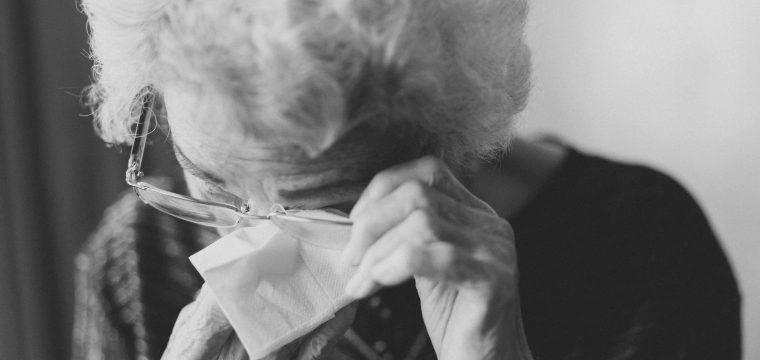In 2016, Colorado approved proposition 106 titled “Access to Medical Aid in Dying,” which allowed eligible, terminally ill individuals with a prognosis of six months or less to live to request and administer medical aid-in-dying medication to voluntarily end his or her life. In 2017, 69 patients received participated, choosing to end their lives with little pain and at their own consent.
The truth is that the end of one’s life is as inevitable as it is painful. Whether your family member is at this stage of their life or they are reaching it, it’s important to focus on what is within your control and accept that which is not. Whether you are dealing with an emotional decision such as medical aid in dying or a natural death, planning for end-of-life care is the most effective way to make sure that your loved one’s wishes are heard and followed. Here is a guide to getting through this tough time:
Put Someone in Charge
Appointing a medical power of attorney (POA) or an official “decision-maker” for end-of-life decisions can help ease the stresses that come with dealing with end-of-life issues. A durable POA for healthcare delegates a person to make healthcare decisions when your loved one cannot. A POA allows your family member to appoint an agent to handle specific health, legal, and financial responsibilities that come with end-of-life care.
Make sure to discuss the flexibility that the decision-maker has. Since death, like life, is uncertain, it’s important to know the wishes of your loved one if the medical plan you’ve made is no longer applicable to the situation is was made for. If the person you are caring for has an acute or chronic illness and has previously said they “don’t want to go to the hospital anymore,” as a decision-maker, it might be against your better judgment to side with the dying individual, but you should do so to prevent unnecessary suffering.
Provide Comfort
The journey your family member is taking can be scary and confusing. Help the person making the end-of-life trip to make a decision on where they’d feel more comfortable in this transitory phase and how they’d like to go.
There are typically two general options for a family member. The first is inpatient care, which provides around-the-clock care at a nursing home, hospice facility, or hospital. Hospice and palliative care provide a treatment approach that is intended to ease symptoms and make the patient comfortable. Most people however, prefer to die at home or in the home of family. This option allows for the family to either assume the role of caregiver or to hire a home care service to support them.
Bradley University outlines an effective model for care. There are three steps that can be followed to help patients effectively cope emotionally while receiving end-of-life care. The first step is to connect your loved one beyond small talk. Talk about favorite memories or life accomplishments. Being friendly, empathetic, and patient can help ease the stresses of this transition for the family member. The second step is to know and respect the care that is coordinated for your loved one. The final step, the “developing potential stage,” helps your loved one focus on the positive aspects of their life. By keeping a positive attitude, you provide more comfort for your loved one.
Respect Wants and Needs
If your family member is lucid, consider talking to them about their preferences. Even though most people put in place an end-of-life plan, their wishes can changes when they are in the throes of death. By choosing their wishes and making them known prior to the last moments of life, your family member expands the time frame to think about their end-of-life options.
Make sure that you have an understanding of the type of care your loved one wishes for at the end of their life. Many people who are approaching the end of their life choose to stop treatments that cause them significant side effects, often replacing and preferring treatments that can improve comfort. It may be a wish of your loved one to prefer to die without the use of life-support machines like ventilators.
It can be common to worry that stopping treatments can make your loved one’s death more sufferable. However, focusing on controlling the symptoms can extend one’s life, as well as allow them to experience a peaceful death.
Understand Legal Documents
There are several forms and documentation that can be provided to convey wishes in the event of an unexpected problem. These are just a few to consider:
- A Physician Orders for Life-Sustaining Treatment (POLST) is a document that tells healthcare professionals what you want in the case of an emergency. Check here to make sure your state accepts this type of documentation, as it varies by state.
- A do-not-resuscitate order (DNR) instructs healthcare professionals not to perform resuscitation if a person’s heart stops of if they stop breathing. This is a signed document that must be notarized by a doctor and be provided for their medical chart.
- A living will can serve as the document that record a person’s wishes for medical treatment near the end of life.
- Advance instructions are documents that outline final wishes long before the end of an individual’s life nears. If your loved one took the time to document how they would like to be remembered, adhere to their final wishes.
Unfortunately, no amount of preparedness can make the end of life easier to accept. It’s an emotional time that should be met with comfort and care. By following these above tips, you’re sure to be ahead of the curve when it comes to end-of-life concerns.

Leave a Reply
You must be logged in to post a comment.